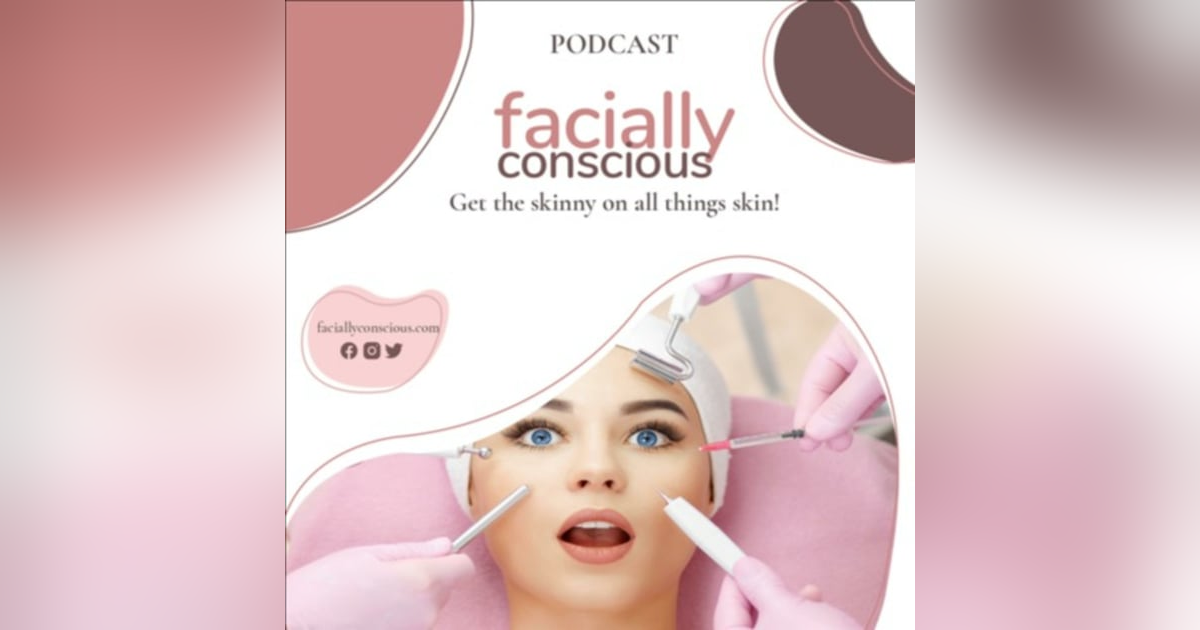Explore the Art and Science of Non-Surgical Rhinoplasty with Top Experts

As an esthetician, I’ve always been fascinated by cosmetic enhancements—especially the evolving science of non-surgical procedures. In the episode of Facially Conscious titled " Bellafill and Other Nose Enhancements: What You Need to Know, " featuring Dr. Alexander Rivkin and Dr. Brandyn Dunn, we had the pleasure of speaking with two renowned experts in cosmetic enhancement: Dr. Alexander Rivkin and Dr. Brandyn Dunn. These specialists shared their extensive knowledge during our discussion on non-surgical rhinoplasty, commonly known as liquid rhinoplasty. If you've ever wondered whether you could enhance your nose without surgery, this episode is for you!
The Pioneers of Non-Surgical Rhinoplasty
Dr. Rivkin is a pioneer in non-surgical rhinoplasty, having developed the procedure nearly two decades ago. With a background in ENT and cosmetic surgery, he recognized an opportunity to utilize fillers in a manner that had never been done before. At the time, using fillers to shape the nose was unprecedented, but he took a chance—and the results were astounding.
On the other hand, Dr. Dunn has a more traditional background in facial plastic and reconstructive surgery. Initially skeptical of non-surgical nose enhancements, he has since embraced it as a valuable tool for patients seeking to refine their nose shape without committing to surgery. His perspective as both a surgeon and a non-surgical injector brought an interesting balance to our conversation.
What is non-surgical rhinoplasty?
Unlike traditional rhinoplasty, which requires surgery and weeks of recovery, non-surgical rhinoplasty is a quick procedure that uses dermal fillers to smooth out irregularities, lift the nasal bridge, or create a more symmetrical appearance. This technique is particularly beneficial for those who wish to correct minor imperfections without undergoing an invasive procedure.
Dr. Rivkin explained that the technique involves precise injections of fillers, such as hyaluronic acid or Bellafill, to reshape the nose. The procedure takes only a few minutes but requires an experienced injector who understands nasal anatomy. Although it may seem like a simple injection, the risks can be significant if performed incorrectly.
The Risks: Why You Should Choose Your Injector Carefully
One of the biggest takeaways from our discussion was the importance of selecting the right provider. As our own Dr. Vicki Rapaport emphasized, non-surgical rhinoplasty is not a procedure to be performed at a med spa or by an untrained provider. The risks are real, and complications such as vascular occlusion, necrosis, and even blindness can occur if the filler is injected incorrectly.
Dr. Rivkin has dedicated much of his recent work to educating others about safety in nasal filler procedures. He and Dr. Dunn both emphasized the importance of understanding vascular anatomy, using proper injection techniques, and having a plan to manage complications.
Who is a suitable candidate for non-surgical rhinoplasty?
While liquid rhinoplasty is an excellent option for many, it is not suitable for everyone. According to Dr. Dunn, ideal candidates are those who:
- Want to smooth out a bump or asymmetry on the bridge of their nose
- Have had previous rhinoplasty and need minor touch-ups
- Are not looking to reduce the overall size of their nose
However, patients seeking a significantly smaller nose or experiencing breathing issues may be better candidates for traditional rhinoplasty.
The Bellafill Debate: Temporary versus Permanent Fillers
One of the most intriguing aspects of our discussion was the debate over permanent fillers like Bellafill. Dr. Rivkin is among the few experts who administer Bellafill for nasal injections, a filler that stimulates collagen and delivers long-lasting results. While many practitioners avoid permanent fillers due to concerns about complications, he has discovered that, when used correctly, Bellafill can be both safe and effective.
Dr. Dunn, however, prefers to use temporary fillers like hyaluronic acid. He is concerned that permanent fillers may restrict future surgical options, such as rhinoplasty, and could pose challenges if a patient decides to change their nose shape years later.
Key Takeaways: What You Should Know Before Getting Nose Filler
If you’re contemplating non-surgical rhinoplasty, here are the main points from our discussion:
- Choose a skilled provider – This intricate procedure necessitates a thorough understanding of anatomy.
- Understand the risks: Complications, although rare, can be severe. Ensure that your injector knows how to manage them.
- Consider your long-term goals. If you’re uncertain about committing to a permanent filler, starting with a temporary one might be a better option.
- Understand that it’s not suitable for everyone – If you require substantial nasal reduction or have breathing difficulties, surgery may be your best option.
For more details about this episode, visit our website or follow us on social media. If you have any questions, feel free to subscribe and comment on this post—we love engaging with our listeners!
Until next time, stay Facially Conscious!









